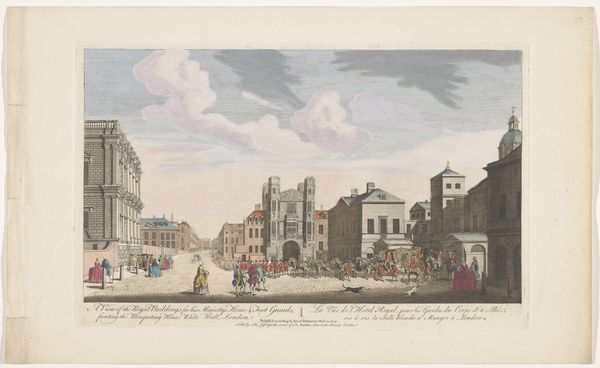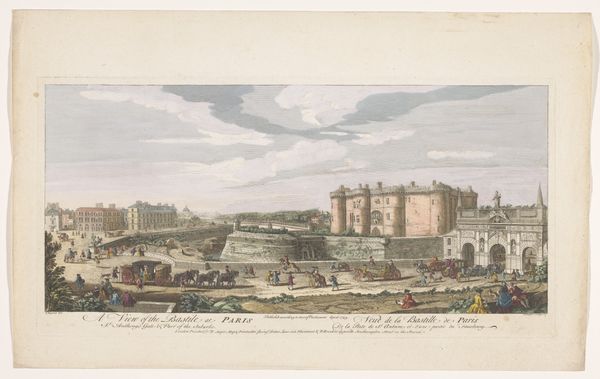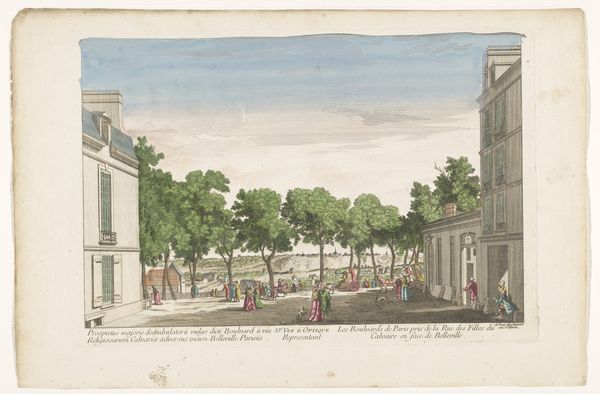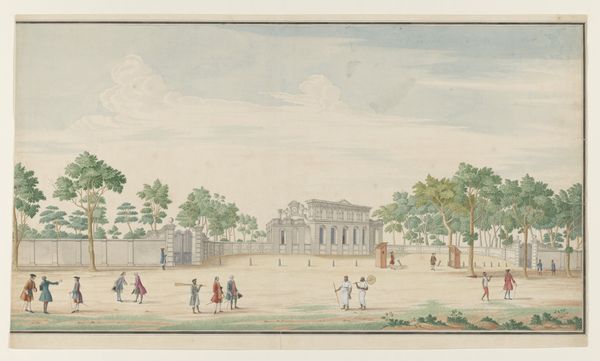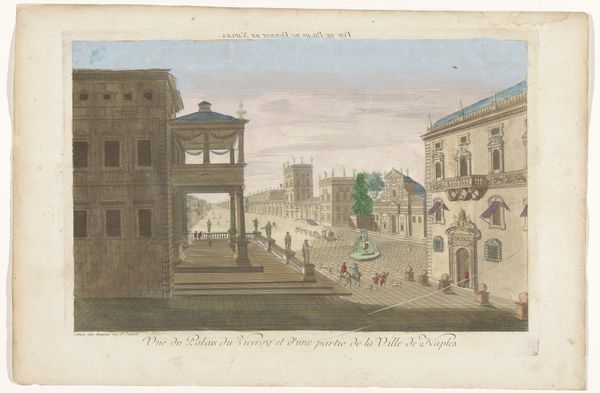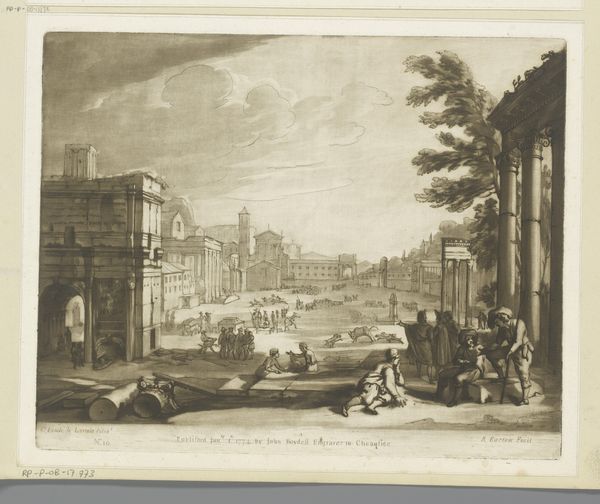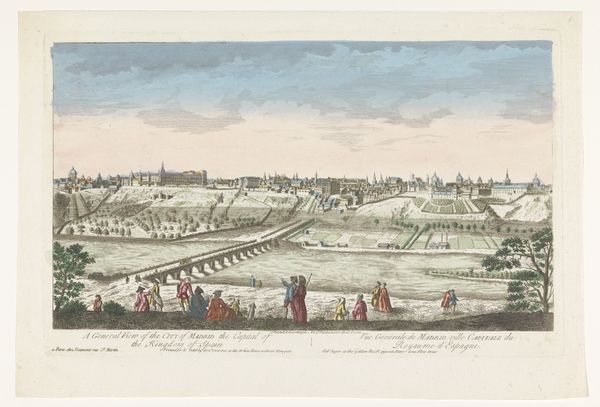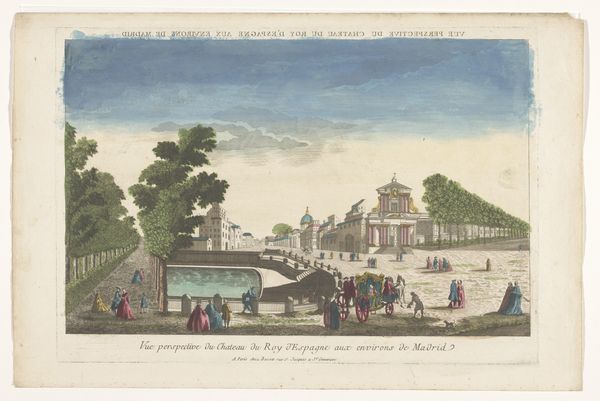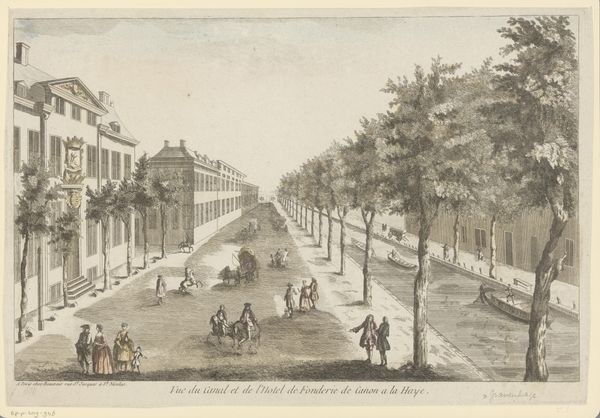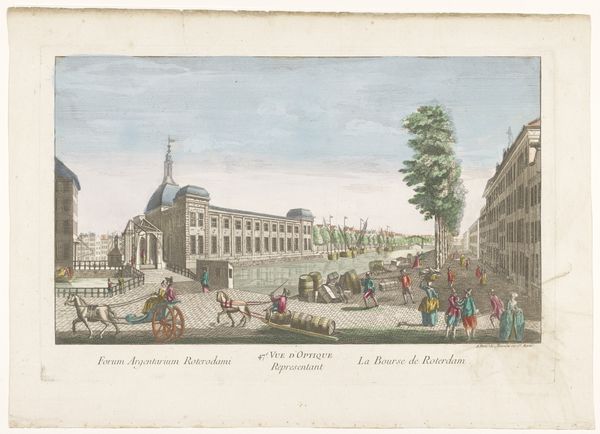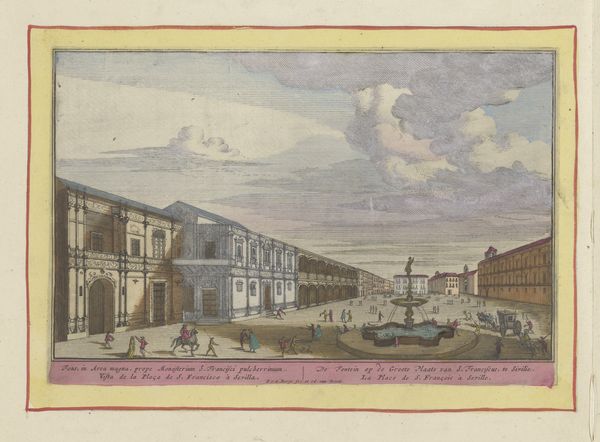
Gezicht op het House of Parliament aan het plein College Green te Dublin 1753
0:00
0:00
robertsayer
Rijksmuseum
print, watercolor, engraving
# print
#
landscape
#
watercolor
#
cityscape
#
watercolour illustration
#
engraving
#
watercolor
#
rococo
Dimensions: height 249 mm, width 402 mm
Copyright: Rijks Museum: Open Domain
Robert Sayer’s print shows the House of Parliament in Dublin, made sometime in the late 18th century using etching and engraving techniques, finished with watercolour. The linear precision of the architecture comes from the engraver’s sharp tool cutting into a metal plate, bearing close attention to detail. The colourist would have been part of a workshop, applying washes according to the publisher's formulas. The paper itself, though unassuming, speaks to the industrialization of papermaking that was well underway at this time, enabling the mass production of images like this one. Prints like these were relatively affordable, feeding a growing market for visual representations of urban life and architecture, as well as fashion. While Sayer may have been the author and publisher, the many hands involved in the print’s production reflect the era’s evolving modes of production and consumption. So, next time you look at a seemingly simple print, think about the complex social web that brought it into being, blurring the boundaries between art, craft, and industry.
Comments
No comments
Be the first to comment and join the conversation on the ultimate creative platform.
